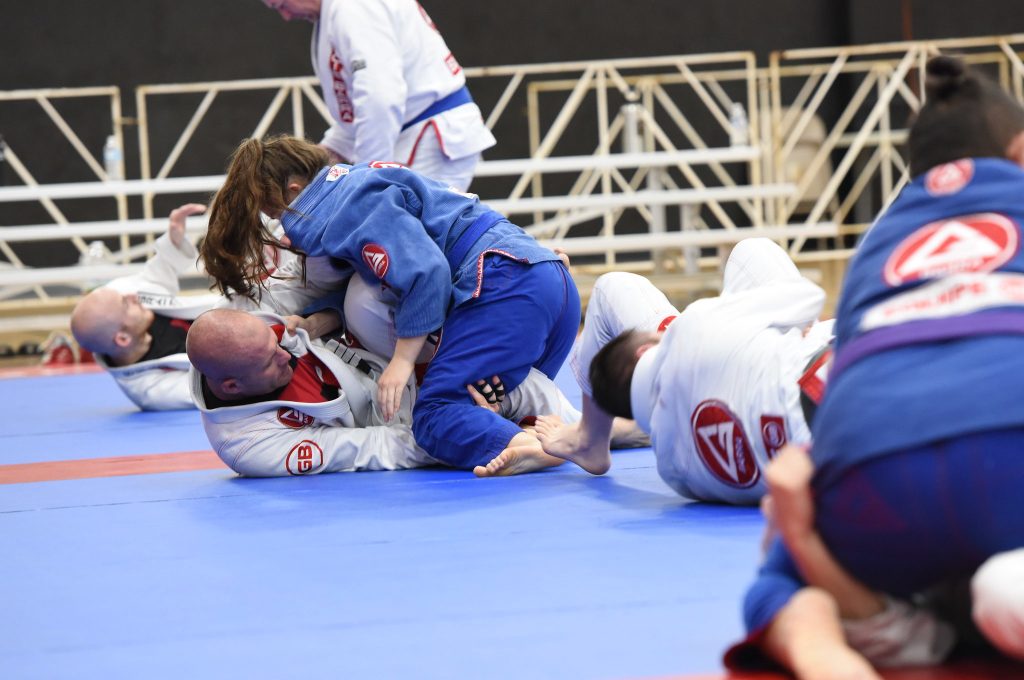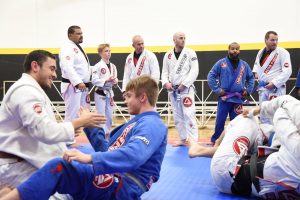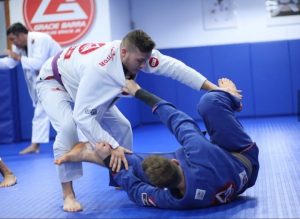GB Student Question: “Can I get good at Jiu-Jitsu just by rolling a lot?”

A Jiu-Jitsu student messaged me after visiting a Jiu-Jitsu school while traveling. He said that he liked the school and that there was no technique instruction on his visit; that the entire class was compromised of rounds of rolling.
ㅤ
Some Jiu-Jitsu schools have the philosophy that the best way to get really good at Jiu-Jitsu is to roll a lot of rounds and learn just by showing up day after day. Now there are a lot of guys who got extremely skilled by just showing up and training hard over a long period of time, but is it the best, most effective way to learn Jiu-Jitsu? Probably not. Not at the earlier stages of a new students training.
ㅤ
Rolling is of course an essential part of Jiu-Jitsu training throughout your journey, but the answer changes as students gain more knowledge and experience in Jiu-Jitsu when plenty of rounds of free sparring are more productive.
ㅤ
Let me explain.
ㅤ
When we start Jiu-Jitsu, we are in the 1st of the 4 stages of competence – “Unconscious Incompetence”. That is to say that we don’t know what we don’t know. We need an experienced instructor and a plan – like the Gracie Barra Curriculum – in order to build some fundamental skills. We need someone to show us the stuff that we most need to know, IN THE ORDER that we need to know it. Forget the Double Reverse Rolling Ninja Choke that you saw on Instagram. You need to understand things like positional hierarchy and how to make posture inside the closed guard for example.
ㅤ
 At this early stage, the new Jiu-Jitsu student doesn’t know anything. They don’t have any idea what to do when they get caught inside their opponent’s closed guard. If they were put into a class with only rolling, they are just going to try to survive based on instinct, which is not the most productive (or encouraging!) way to learn Jiu-Jitsu. Gracie Barra starts students with the “specific training” limited to a specific position with limited objectives. This is the best way to get started rolling.
At this early stage, the new Jiu-Jitsu student doesn’t know anything. They don’t have any idea what to do when they get caught inside their opponent’s closed guard. If they were put into a class with only rolling, they are just going to try to survive based on instinct, which is not the most productive (or encouraging!) way to learn Jiu-Jitsu. Gracie Barra starts students with the “specific training” limited to a specific position with limited objectives. This is the best way to get started rolling.ㅤ
This changes over time of course. Many experienced instructors say that by purple belt, most students have seen all of the techniques that they need to know to be a black belt. This stage of competence is known as “Conscious Competence”. The more experienced student has a solid grasp of what they need to do, now it becomes a matter of getting better at those things.
ㅤ
After purple belt, a lot of free rolling is more productive because the purple belt already knows the positions, they now need to roll and burn them into the muscle memory, learn setups, timing, chaining techniques together and so on. Rolling is most important now as opposed to looking for yet another new move to add to their game
ㅤ
Before that stage, the Jiu-Jitsu student is focusing on building their vocabulary of possible techniques and mastering the proper mechanics for those moves.
This is the period when their primary instructor is most helpful in directing their efforts towards the most important fundamental techniques. Steering the less experienced student away from the more advanced, flashy but lower percentage techniques. Your head instructor knows the road well and is invaluable in guiding your early learning.
An experienced instructor can tell you “get good at these 3 guard passes  first… worry about the others later”. This is enormously helpful in reducing the overwhelming number of possible moves down to a manageable subset of techniques. Don’t worry about all of the other possibilities, you will eventually get to them.
first… worry about the others later”. This is enormously helpful in reducing the overwhelming number of possible moves down to a manageable subset of techniques. Don’t worry about all of the other possibilities, you will eventually get to them.
 first… worry about the others later”. This is enormously helpful in reducing the overwhelming number of possible moves down to a manageable subset of techniques. Don’t worry about all of the other possibilities, you will eventually get to them.
first… worry about the others later”. This is enormously helpful in reducing the overwhelming number of possible moves down to a manageable subset of techniques. Don’t worry about all of the other possibilities, you will eventually get to them.ㅤ
More of your training time in the first couple of years of training Jiu-Jitsu is most productively spent drilling and learning. As you have more moves under your belt, you can try to get them to work in sparring. In Brazil, I observed that many black belts didn’t attend the actual class, instead showing up near the end just for the rolling portion.
The more experienced the belt, it seems the more they get out of rolling a lot.
ㅤ
Credits: Mark Mullen
Gracie Barra Black belt based in Asia
